|
I n d o n e s i a
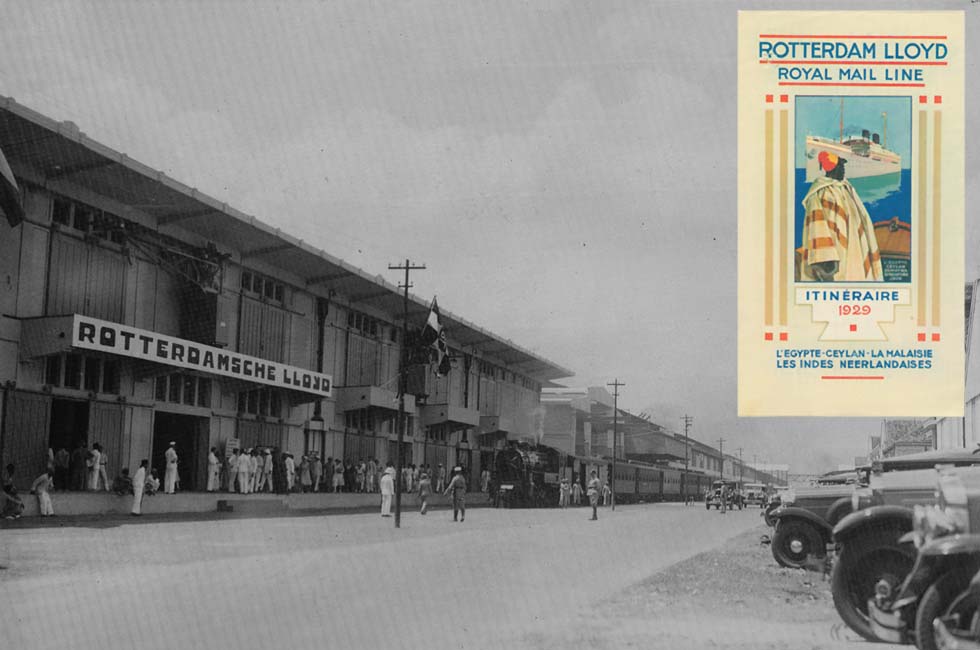
Advertisement from 1928 and a train possibly from Bandung with a tank engine (later class C27) arriving at Tanjung Priok docks before departure of the Ocean liner (coll. Willem Ruys)
Indonesia, once the most important Dutch colony, was served by the Rotterdam Lloyd and the S.M. Nederland in connection with the Dutch "Boottreinen" in Europe. In 1894 the rails from Jakarta (Batavia) with the most important harbor to Surabaya were completed by the government railway and NISM, but between Jogjakarta and Solo the passengers had to change from Cape gauge (Staatsspoorwegen) to standard gauge (NISM). From 1905 direct Cape gauge trains used a third rail. In 1903 a line from Surabaya to Banyuwangi was completed, where passengers could take ferry boats to Bali island.
Only during WWI the Dutch mail was conveyed via San Francisco. A new Cape gauge government line Cirebon - Kroya allowed to start the first day train Jakarta (Weltevreden) - Surabaya in November 1929. That "E.E." had 7 cars, including a diner. From 1936 there was also a night train, including sleeping-cars, Surabaya - Jakarta, on days of steamer departures extended to Tanjong Priok docks. Express passenger locomotives on Cape gauge were the Pacific series C50 from SLM and Hartmann, C53 from Werkspoor and the 4-6-4 tank engines from Germany.
The Japanese conquered Indonesia in 1941. They changed the few standard gauge sections to Cape gauge and they brought the standard gauge engines to Manchuria. They built new lines also in Sumatra, but that island never had a complete network. After civil war Indonesia became independent in 1949. The Dutch steamer services ended in 1958, but in 1966 the blue all-sleeper BIMA Express was built in Eastern Germany for Jakarta - Surabaya services, later including also coaches. During the 70's there was even a sort of boat-train Surabaya - Jogjakarta in connection with the cruise ship "Prinsendam", consisting of a diner from VEB Bautzen and a 1st class car.
In 1995 there were discussions about a German maglev railway for Indonesia. Densely populated Java with its crowded trains indeed would be ideal at least for a standard gauge high-speed network.
The Parahyangan Express now is history, the management have change it and combine with the other express in the same route (Argo Gede Express) and become Argo Parahyangan Express.
Java Express
Jakarta - Jogyakarta - Surabaya, according to "The Locomotive" 1912 seven cars, including a mail van, a van, a diner, a 1st2nd class car, 3rd class and a van, hauled by 4-4-0 engines.
BIMA Express
PJKA, Jakarta - Surabaya,
Jakarta July 31, 1975:
| BB201 or BB301 diesel | | |
| 1 | FW | (dining car) |
| 2 | SAGW | (sleeping car, side corridor) |
| 2 | SBGW | (sleeping car, zig-zag corridor) |
| 2 | van/mail | |
| 1 | van | |
Colors: light blue, FW orange/light grey, locomotives light green/cream.
Later traction by CC201 diesel (photograph see chapter Travels).
Constructing a high-speed line Jakarta – Bandung was expected to start in 2016.
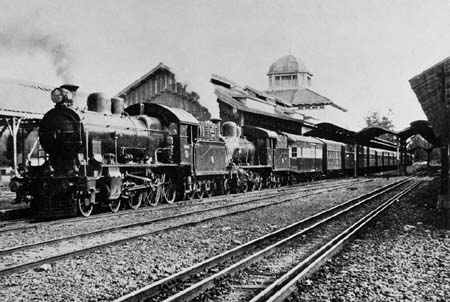
A rare picture of a standard gauge express: Train 38 with tenwheeler engines 121 and 89 of NISM, Semarang Tawang, April 1939 (Biezeveld, coll. A.W. Brouwer van Aalderen)
|
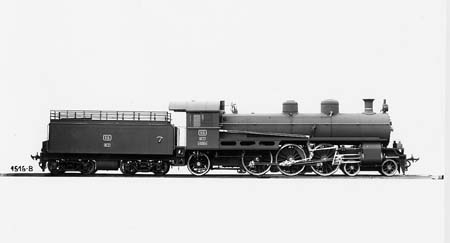
Cape gauge express passenger engine 377 (later class C50) from 1910 (SLM Winterthur)
|
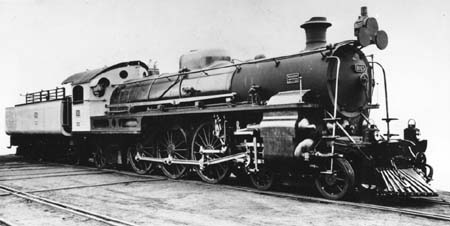
Cape gauge Pacific no. 1015, later class C53, built by Werkspoor in 1921/22 (Werkspoor/ coll. Brouwer)
|
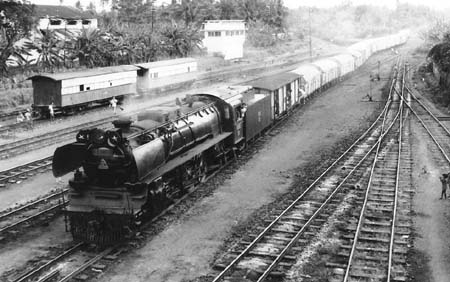
Mikado D52, Cape gauge like all the newer engines, built by Krupp in 1951, with a freight train at Banjar 1973 (Marc Dahlstrom)
|
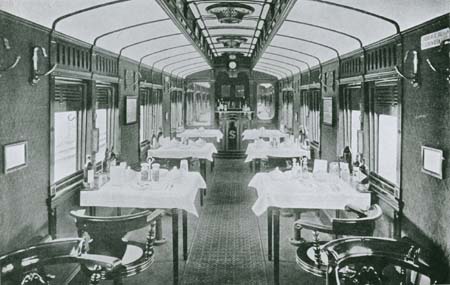
Dining-car on Java (published in the 1920s)
|
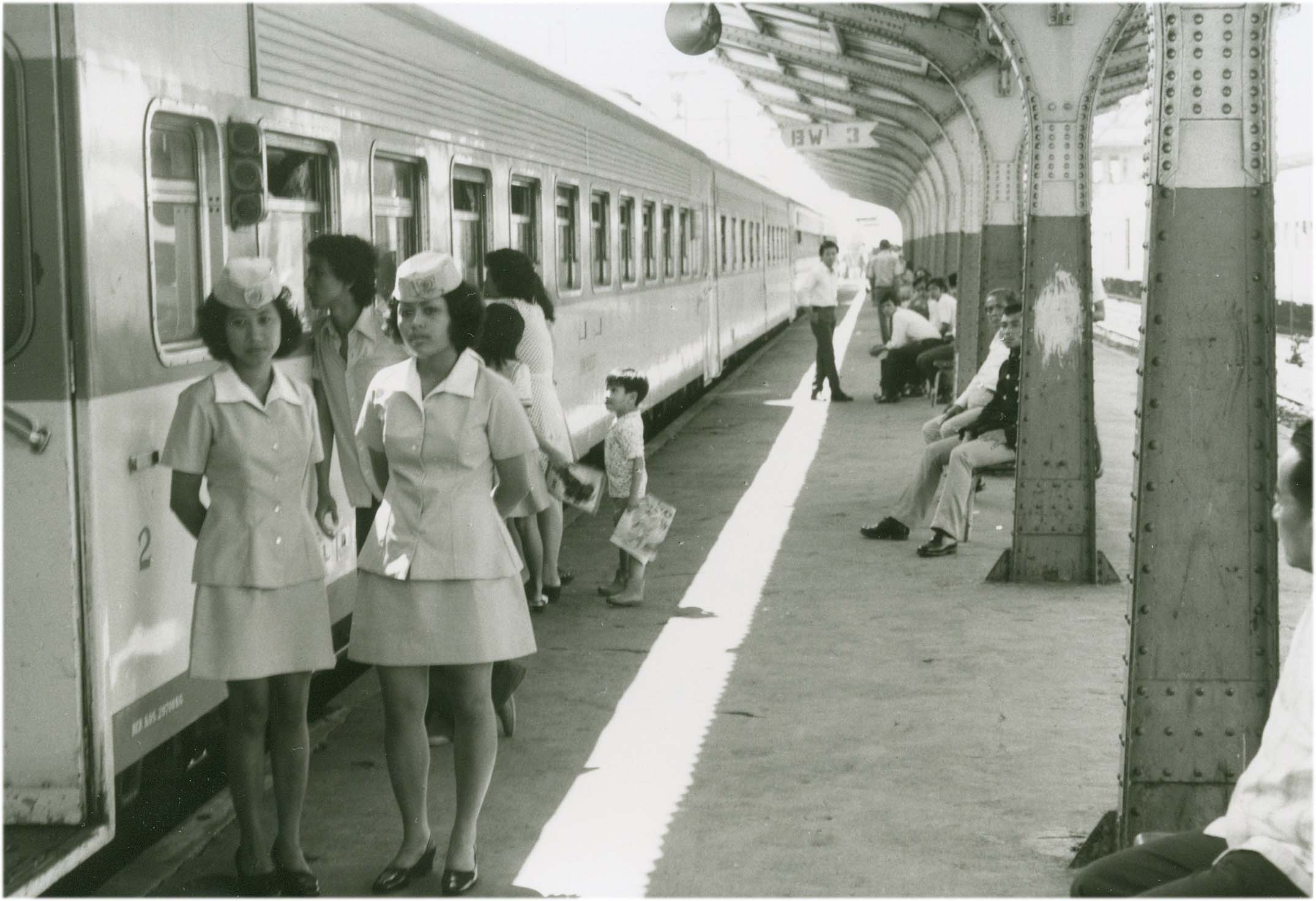
Jakarta - Bandung, 1975 (WS)
|

1.5 kV engine no. 203 from Werkspoor 1925, presumably for Jakarta – Bogor, at Jakarta Kota 1975 (WS)
|
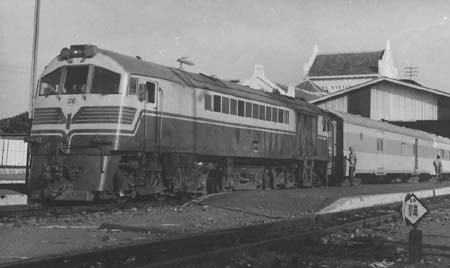
Express Surabaya – Jakarta with C-2-C type diesel-electric CC200 class no. 26, built by General Electric in 1953, at Cirebon in 1972 (William Pearce)
|
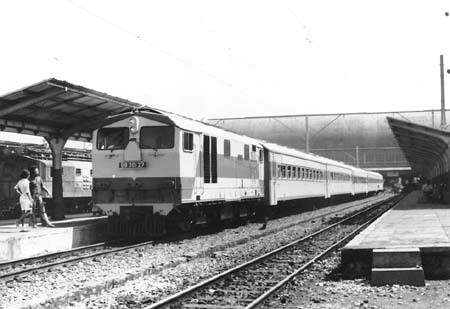
Parahyangan Express Jakarta – Bandung with BB301 27 from Krupp, Jakarta Kota 1975 (WS)
|
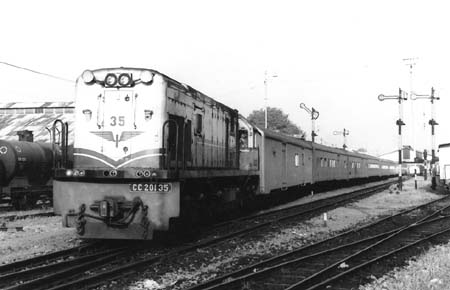
BIMA all-sleeper express Jakarta – Surabaya with CC201 35 and 9 blue cars, at Madiun 1980 (Guenter Haslbeck)
|
|